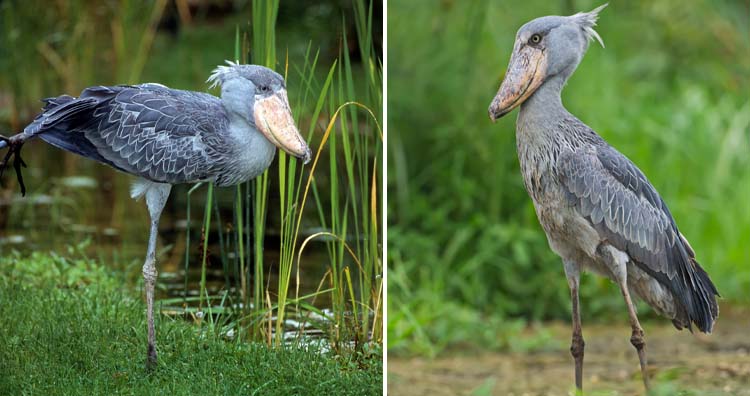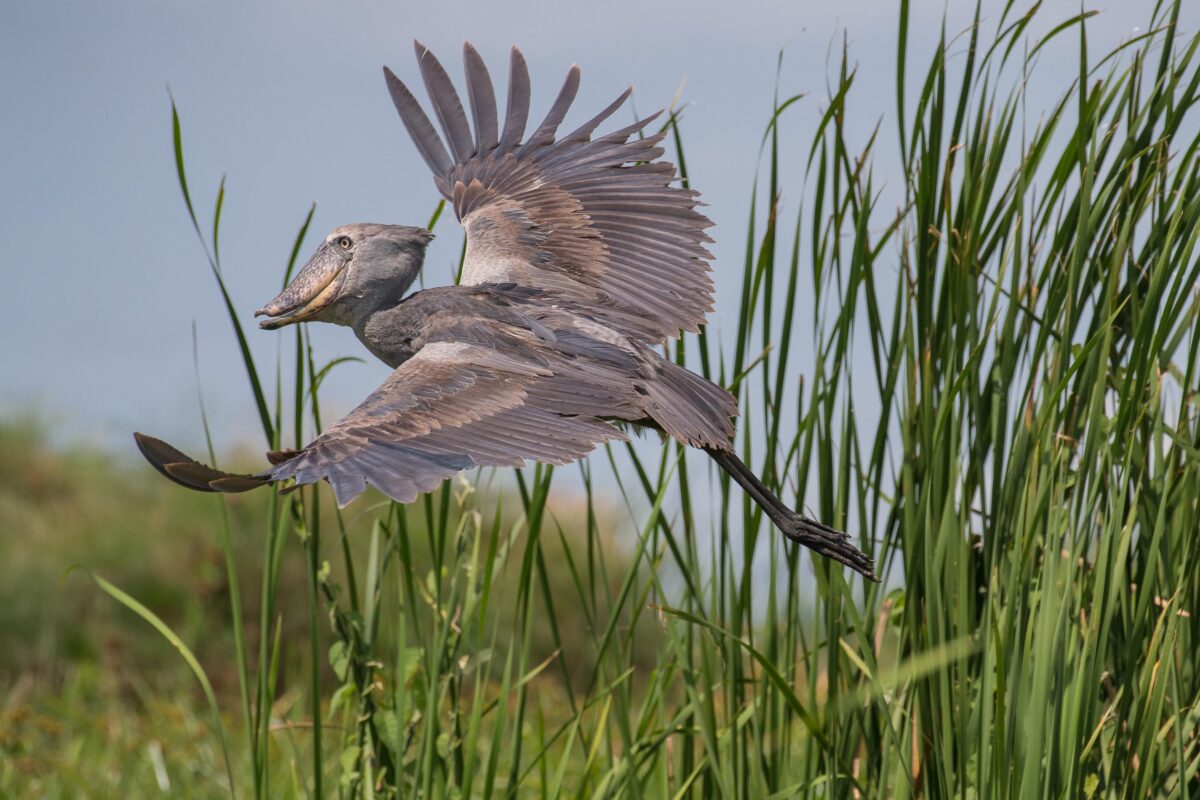

The shoebill stock is a very large stork-like bird which derives its name from its enormous shoe-shaped bill. Wikisource has the text of the 1911 Encyclopædia Britannica article Shoe-bill.Facts about the Shoebill Stock bird : The shoebill stork also scientifically called Balaeniceps rex is one of the best bird species in Africa and certainly one of the most challenging birds to find in Africa. Wikispecies has information on: Balaeniceps rex. Wikimedia Commons has media related to Balaeniceps rex. "IUCN Red List of Threatened Species: Balaeniceps rex". ↑ International), BirdLife International (BirdLife (13 August 2018)."Sahara - Algeria - Rock Art in Oued Derat and the Tefedest Region" (PDF). ↑ 5.0 5.1 5.2 5.3 5.4 Elliott, Andrew Garcia, Ernest Boesman, Peter F."A Phylogenomic Study of Birds Reveals Their Evolutionary History". ↑ "Balaeniceps rex (Shoebill) - Avibase".Helm Dictionary of Scientific Bird Names. "IUCN Red List of Threatened Species: Shoebill". ↑ BirdLife International (13 August 2018).

The IUCN says that the shoebill is vulnerable. For example, it mainly eats lungfish and catfish in Uganda, but mainly eats catfish and water snakes in Zambia. The animals that the shoebill eats depends on where it lives. The shoebill likes to hunt in areas where the water has less oxygen, because fish in these areas have to come up to breathe. It also eats amphibians, young crocodiles, water snakes, rodents, and young waterfowl. The main types of fish that it eats are lungfish, Senegal bichir, Clarias catfish, and tilapia. The shoebill mostly eats fish weighing up to 500 g (18 oz). Breeding pairs defend a territory 2 to 42 to 4 km 2 (0.77 to 1.54 sq mi) from others of their species. Shoebills are solitary by nature, and even their nests are spaced apart. Rock art from Oued Djerat in eastern Algeria shows that in the early Holocene, shoebills lived much more to the north, in wetlands where the Sahara Desert is now. In places with deep water, it needs floating vegetation. It sometimes lives in marshy areas next to lakes and in places where the water have very little oxygen. It likes marshes that have papyrus, reeds, cattails, and grasses. It does not migrate, but sometimes moves to different areas when the water level changes. The areas that it lives in are mostly places that also have papyrus and lungfish. It also lives in Uganda, Tanzania, and Kenya. It is also sometimes found in the Central African Republic. The shoebill lives in marshes from southern Sudan and southwestern Ethiopia to southern DR Congo and northern Zambia. Young shoebills are known to make sounds that are like human hiccups when they want food. They make high-pitched beeeeeh sounds near their nests, and might also make loud sounds when flying. During these displays, they sometimes make moo sounds that are like a cow's. Sometimes, they do bill-clattering displays near their nests. It can be told apart by the shape of its beak and its bluish-grey color. When it is flying, the shoebill looks like other storks and herons. Younger birds look similar to adults, but are more brownish and have smaller, more pinkish beaks. The beak has a hook-like end that helps catch fish. The beak is usually straw-colored with blackish marks, while the iris (the non-black part of the eye) can be yellow, grey, or whitish in color. The wings are darker than the rest of the body, and the upper body is slightly greenish in color. They are mostly grey in color, with their belly being whitish. The birds are easily told apart by their shoe-shaped beak.


Males and females look almost the same, but males are a little larger. The shoebill is a large, tall bird that is around 120 cm (47 in) tall and weighing 6–7 kg (13–15 lb) for males and 4.36–5.9 kg (9.6–13.0 lb) for females. These studies have also shown that it is closely related to the pelicans, and so it is now put in the order Pelecaniformes. Studies of the shoebill's DNA have shown that the shoebill is in its own family, Balaenicipitidae. The shoebill is also sometimes called the shoebill stork, shoe-billed stork, or bogbird. He gave it the scientific name (a two-part name given to types of plants and animals) Balaeniceps rex. The shoebill was first described by John Gould in 1850.


 0 kommentar(er)
0 kommentar(er)
